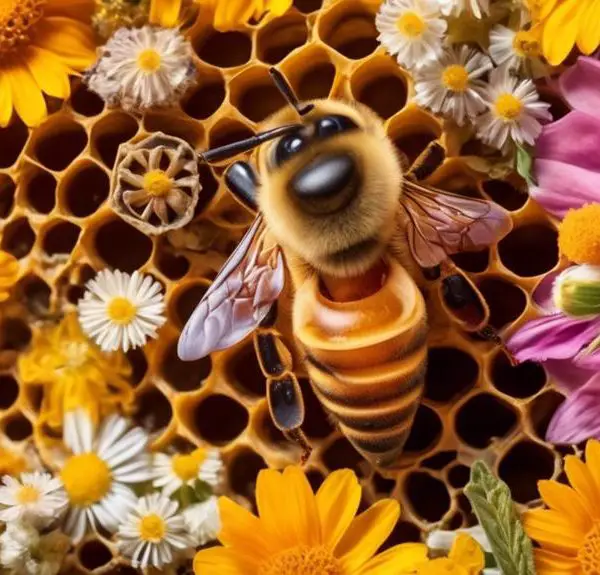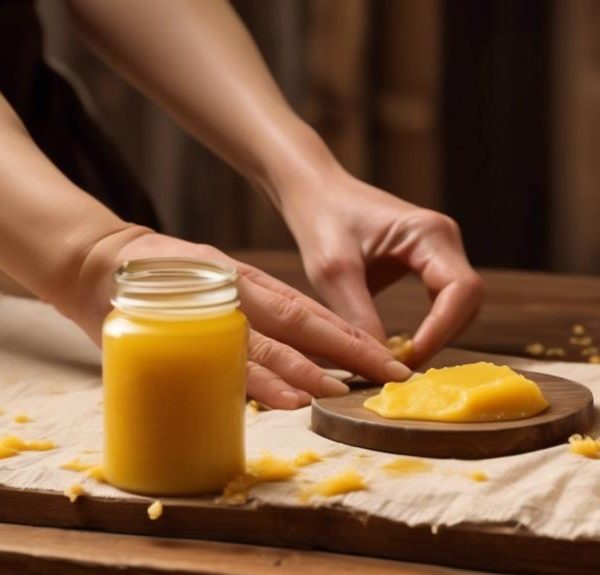Marvel at the intricate production process, the role of bees, and environmental factors that make beeswax a pricey, yet fascinating natural wonder.
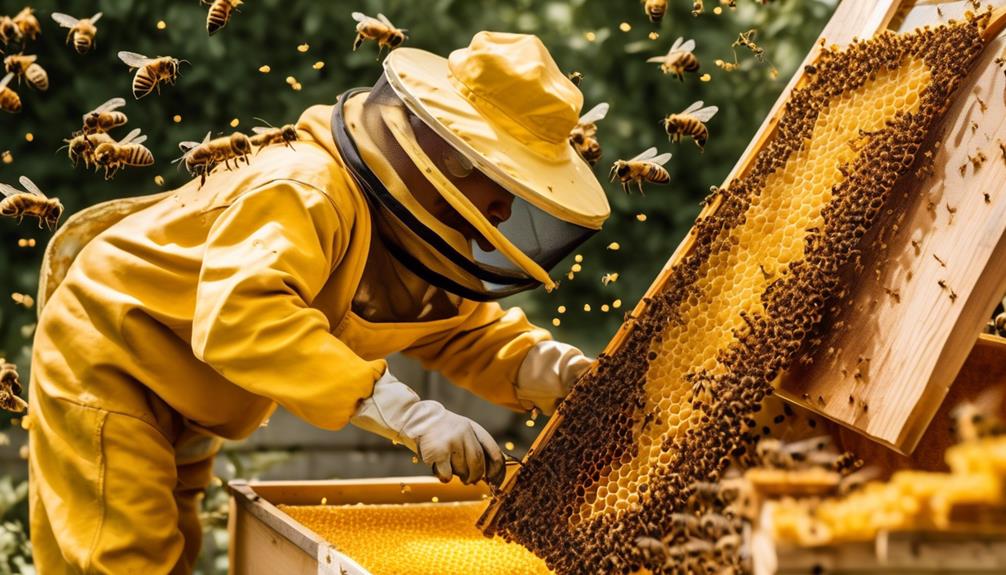
Why Is Beeswax so Expensive?
You walk into a store and see a beeswax candle. You're taken aback by the price tag. You've noticed that beeswax is often more expensive than other natural products, even those that are organic or sustainably sourced.
This is primarily due to the intricate production process, the integral role of bees, and the impact of environmental factors, all of which contribute to the high cost of beeswax. But these factors only scratch the surface of the story.
Through this discussion, you'll uncover the deeper reasons behind the high price of beeswax and, perhaps, develop a newfound appreciation for this natural wonder.
Key Takeaways
- Beeswax production is labor-intensive and time-consuming, requiring the efforts of thousands of worker bees.
- Environmental factors such as climate change, pesticides, habitat loss, and diseases affect bee colonies and contribute to the higher cost of beeswax.
- The quality of beeswax, including its purity, processing level, and color, determines its price.
- There is a growing demand for beeswax products in various industries due to its natural, non-toxic, and biodegradable properties, leading to a supply-demand imbalance.
Understanding the Beeswax Production Process
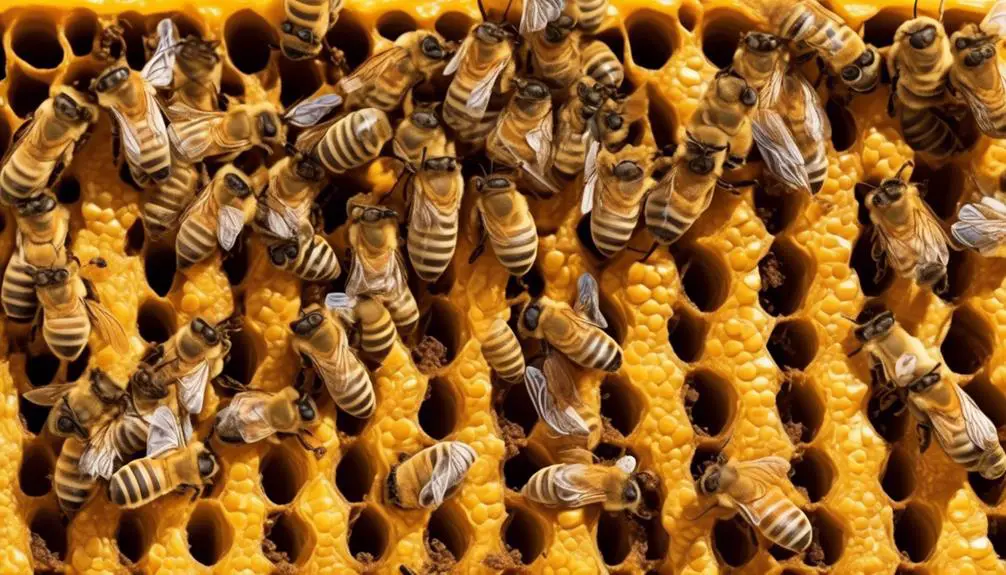
To fully appreciate the value of beeswax, it's crucial to understand the intricate process that bees undergo to produce it. Worker bees, those diligent little artisans, possess special glands on their abdomen that secrete wax droplets. It's a slow, meticulous process requiring substantial amounts of honey consumption, with bees metabolizing eight pounds of honey to create just a single pound of wax.
As the wax droplets cool, they harden into scales. Here's where the real teamwork begins. The bees harvest these scales and begin to mold them into the hexagonal cells of the hive, a feat of engineering that's marveled at by scientists. This process is labor-intensive and time-consuming, hence the high value of beeswax.
The Role of Bees in Beeswax Production
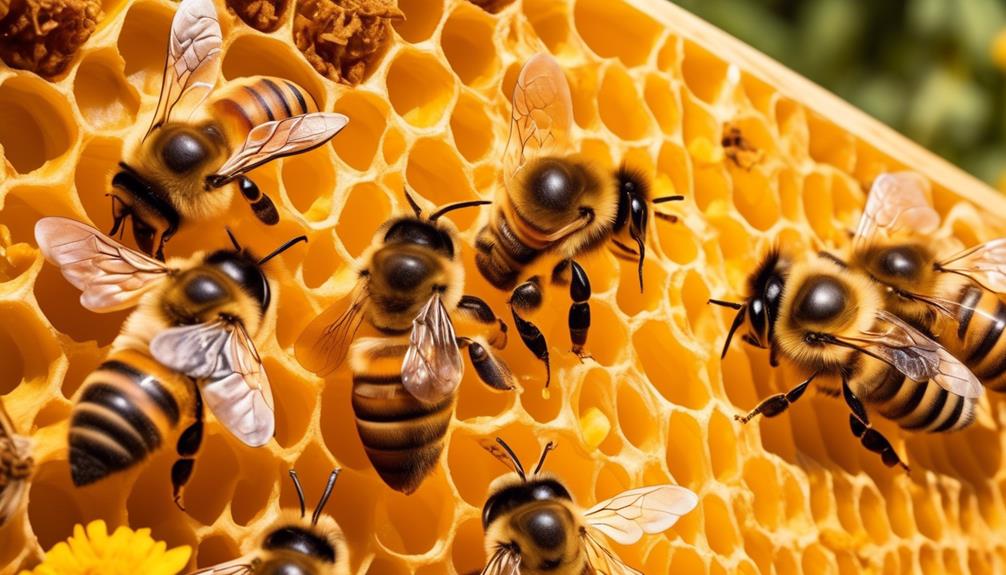
While you may already appreciate the complexity of beeswax production, it's equally important to delve into the specific responsibilities and roles that bees play in this intricate process.
Beeswax is essentially the product of thousands of worker bees' tireless efforts. These bees, predominantly females, have specialized glands on their abdomen that produce wax droplets. When combined with honey and pollen inside the hive, these droplets transform into beeswax.
These bees create honeycomb cells with the wax, which serve as storage units for honey, pollen, and as a nursery for new bees. They meticulously craft each cell, ensuring optimal shape and size for the hive's needs. This labor-intensive process is why beeswax is so valuable.
The bees' role doesn't end there. They also maintain the hive's temperature to ensure the wax stays pliable. Too cold, and the wax hardens; too hot, and it melts. This delicate balancing act is an ongoing task for the hive's occupants.
Impact of Environmental Factors on Cost
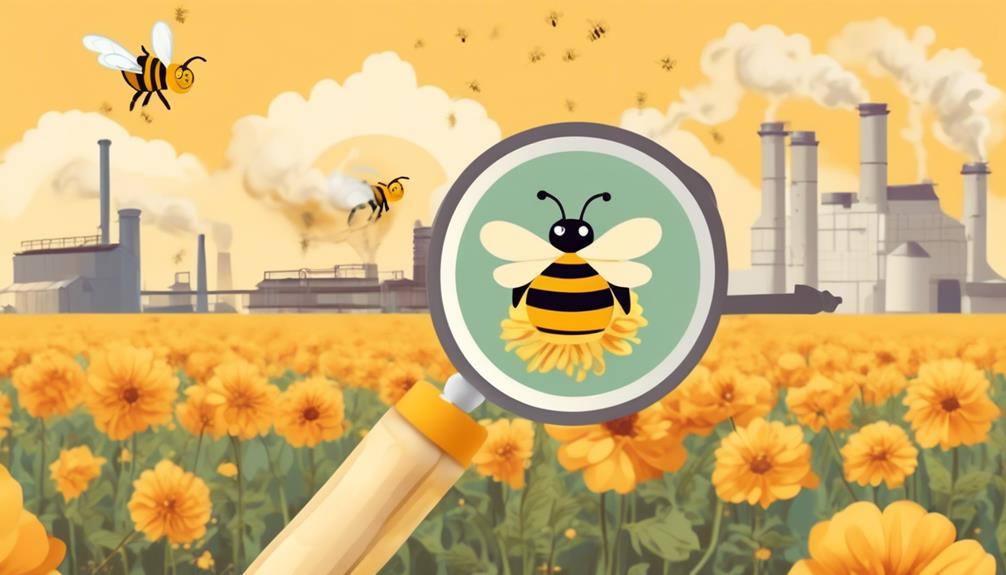
In understanding the laborious efforts of bees in beeswax production, it's crucial to also consider how environmental factors elevate the cost of this precious commodity. Several external elements affect beeswax production and subsequently its market price.
Climate change, for instance, is a major culprit. It's causing unpredictable weather patterns and increased temperatures, which stress bee colonies and impact their productivity.
Pesticides too play a significant role. They contaminate nectar sources, weaken bee immune systems, and reduce their ability to produce wax.
Habitat loss also factors in. With urbanization taking over natural landscapes, bees are losing their foraging grounds. This loss translates to decreased nectar collection and, ultimately, less wax production.
The cost of beeswax is additionally influenced by the increase in diseases and parasites that attack bee colonies. These threats reduce the bee population, leading to a decline in wax production and a surge in its price.
Beeswax Quality and Pricing
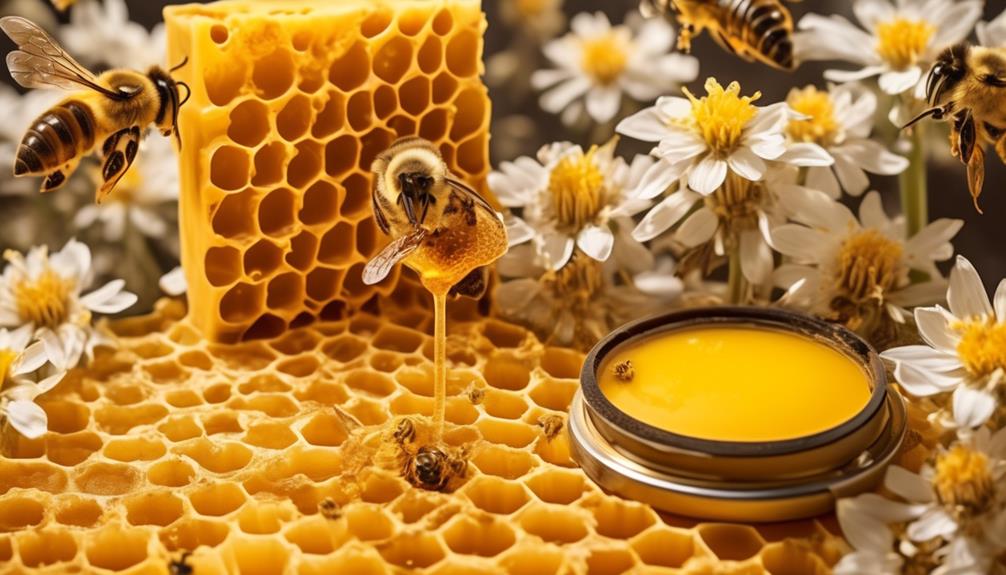
Diving deep into the world of beeswax, you'll find that its quality plays a substantial role in determining its price. The quality of beeswax is largely dependent on the purity and the processing methods employed. Pure, unadulterated beeswax is naturally more expensive due to its superior quality and limited supply.
Beeswax that's been minimally processed, retaining its natural properties, fetches a higher price. This type of beeswax is often preferred for applications where purity is paramount, such as in cosmetics, pharmaceuticals, and high-end candles. On the other hand, cheaper beeswax may have been processed more extensively or mixed with other waxes, which can dilute its unique properties.
Another aspect is the color. Naturally, beeswax ranges from nearly white to very dark brown. The color is mainly influenced by the type of flowers the bees visit, the age of the wax, and the presence of impurities. Lighter shades are typically more desirable and thus pricier.
In short, the price of beeswax reflects its quality. As with any product, you get what you pay for. Higher quality beeswax, with its unmatched purity and minimal processing, will always command a higher price.
Market Demand for Beeswax Products

You'll find an ever-growing demand for beeswax products in today's market, driven by its myriad uses and superior quality. This versatile commodity is used in a multitude of industries, from cosmetics and food to art and pharmaceuticals. It's not just about candles and lip balms anymore; beeswax is now a key ingredient in body lotions, hair pomades, and even furniture polishes.
Consumers are increasingly conscious about what goes into their products. The natural, non-toxic, and biodegradable properties of beeswax make it a preferred choice for those seeking sustainable and eco-friendly alternatives. Moreover, beeswax carries a hint of honey fragrance that adds a unique sensory experience to products, enhancing their appeal.
The rise in demand isn't matched by supply, though. Beeswax production is a labor-intensive process that's dependent on numerous uncontrollable factors like weather, bee health, and floral availability. It's not something that can be easily scaled up or down according to market trends.
Frequently Asked Questions
What Are the Common Uses of Beeswax in Various Industries?
You'll find beeswax in various industries due to its versatile nature.
It's commonly used in cosmetics like lip balm and lotion for its moisturizing properties.
In the food industry, it's used as a coating for cheese and a glazing agent for candies.
You'll also find it in candle making for its slow, clean burn.
In the pharmaceutical industry, it's utilized in salves and ointments.
It's even used in the production of encaustic paintings.
Are There Any Ethical Concerns Associated With Beeswax Production?
Yes, there are ethical concerns with beeswax production. Bees are often harmed during the extraction process. Also, commercial beekeeping can disrupt local ecosystems.
It's important to buy beeswax from sustainable, ethical sources. Look for certifications like organic or fair trade.
How Does the Global Economy Affect the Price of Beeswax?
The global economy greatly impacts beeswax pricing. When economies are strong, demand for goods like beeswax increases, driving up prices. Conversely, during economic downturns, demand may decrease, affecting prices.
Furthermore, global events can disrupt beeswax supply chains, causing price fluctuations. You're also paying for the labor-intensive process of beeswax production and the health of bee populations worldwide.
It's a complex web of factors that determine beeswax's cost.
Are There Any Viable Alternatives to Beeswax in the Market?
Yes, there are alternatives to beeswax you could consider.
Soy wax is a popular choice due to its affordability and ease of use. It's derived from soybean oil and is a renewable source.
Another option is paraffin wax, a petroleum by-product, but it's not as eco-friendly.
Palm wax, made from palm oil, is also used, but it's controversial due to deforestation concerns.
Each has its pros and cons, so you'll need to choose based on your specific needs.
What Health Benefits Does Beeswax Provide?
You're probably wondering about the health benefits of beeswax.
It's known for its anti-inflammatory and antibacterial properties, which can help with wound healing.
Beeswax also works as a barrier, locking in skin's natural moisture while protecting it from environmental toxins.
Plus, it's high in vitamin A, promoting cell regeneration.
Many people find it beneficial for lip care, eczema, and dermatitis.
Despite its cost, the health benefits of beeswax make it a valuable investment.
Conclusion
In the end, beeswax's high price tag is due to several factors. The complex production process and the tireless work of bees contribute to its cost. Additionally, the impact of environmental factors affects the availability and quality of beeswax.
The quality of beeswax itself also plays a crucial role in determining its price. Higher quality beeswax, which is free from impurities and has a desirable color and scent, commands a higher price in the market.
Furthermore, the soaring market demand for beeswax products significantly contributes to the steep price of beeswax. As more people become aware of the benefits of beeswax in various applications, the demand for beeswax-based products increases, leading to higher prices.
So, next time you buy a beeswax product, remember the effort and resources that go into making it. The complex production process, the hard work of bees, environmental factors, and market demand all contribute to the high price of beeswax.

